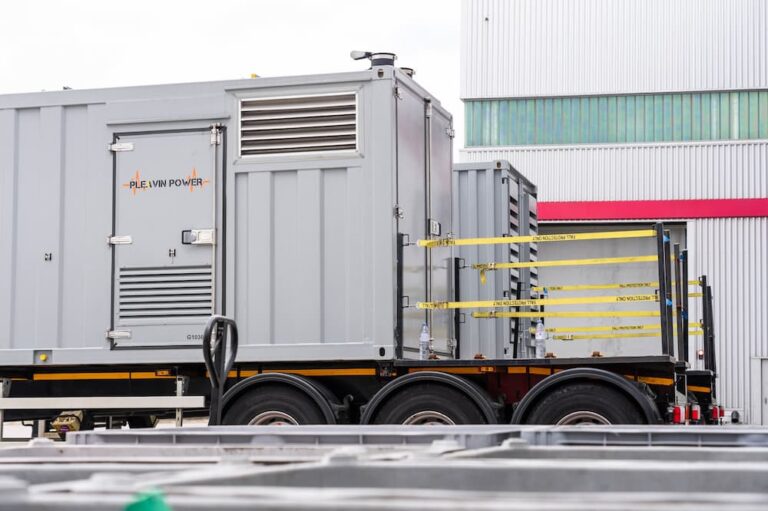Throughout our lives, we have all experienced an unwanted power outage inside our homes which leads to a need for an emergency power supply. With power outages, there is always a risk of injury due to a lack of vision from the darkness.
You could be without heating and without any power inside your house, and your appliances may stop working such as your fridge or freezers causing you to lose stocked food leaving you annoyingly out of pocket.
Unlike a standby generator that will require extensive installation, a portable generator is a lot easier to set up in a time of crisis, a portable generator is even handy outside of using it for your home such as bringing it on a camping trip or a party.
It’s not ideal to be using a portable generator to power any big appliances due to their small and compact nature. With the right power control management, we can get the most out of portable generators for your home.
There are a variety of reasons and factors to take into consideration on why your power has been cut – but instead of waiting around complaining about your power being off in the cold, you can power your house and appliances with a portable generator.
If you’ve never used a generator for your house, we are going to break it down for you to help you next time you experience a power problem.
How To Use A Generator To Power Your House
When you are looking to power your home in the event of a power outage, using a generator is one of the best and most efficient ways in which you can do so. But how is best to do this? Follow our step by step guide below to learn more!
Step 1
You are going to place your generator from a safe distance from your household and any nearby neighbour’s houses with all of your doors and windows being kept shut to make sure any potentially dangerous fumes from the portable generator enter your house. This is very unlikely but we need to be as safe as possible and take the needed precautions.
Step 2
Once you’ve placed your generator the surroundings are safe and windows, and doors shut inside your house. Check if your portable generator has enough fuel and oil to run for as long as you need. If not, it’s in your best interest to top it up with the correct type of oil.
Step 3
Plug the appliances you need to use inside your household into an adapter but do not turn on any of the appliances when you’ve plugged them in (We know you can’t use them but we need them turned off) and then run the cable from the generator and plug it indirectly, make sure you check your cable is able to run and support the amount you intend to run through it.
On the other hand, you can install a transfer switch inside your household and this means you can wire a generator into your main supply. This should only be done by a qualified electrician with the skills necessary to complete a job like this.
Step 4
With this fully-setup, turn on your portable generator. You will find out how to do this by reading the user manual that came with your generator and allowing a few minutes to pass for it to warm up.
Now with your power supply ready and warmed up, you can now turn on your appliances one by one to avoid overloading the generator straight away when turned on. Once the engine is fully functioning and working, you can begin to start plugging in appliances that use more power than certain appliances such as your fridge.
You can now enjoy a new source of strong power in your house courtesy of a portable generator. While you are waiting for your main power supply to come back, it’s important to monitor your portable generator hourly and what’s currently being powered in your house.
Step 5
If your power has returned, the portable generator has done its job correctly and helped you through your power cut so it’s time for it to return back to storage for the next time you may need to use it.
Reverse the set-up process step-by-step to safely disconnect everything then wait for your generator to fully cool down and then return your generator to its designated storage area. Do regular check-ups over time to make sure the generator is staying clean and is free from any damage.
Ensure Your Safety
Here’s a safety checklist for you to follow when using your portable generator:
- If you are deciding to use extension cords, check that they are used and designed for any heavy-duty usage.
- Keep your portable generator in a dry and safe place to avoid electrocution which could possibly lead to fatal injuries.
- If you are going to refuel your generator, make sure you turn off all the appliances that you are using and allow the unit to cool down first before refuelling it.
- Keep the area where you are going to place your portable generator away from any flammable materials, that even includes the generator fuel.
- Let your generator engine cool down fully before storing it in a safe and secure place.
Choosing The Right Portable Generator For Your House
It’s very important that you choose the right portable generator to use for your house. You will need to fully calculate the total amount of watts you may need to get from your generator.
The starting wattage of your items will be typically higher once it’s up and running so you will need to take this into account when choosing the generator. Each item that you have chosen in your household from lighting appliances to your kettle should have the wattage total indicated on it.
Once you have got your total wattage needed for your generator, it’s crucial that your chosen generator can accommodate the wattage needed but that it does it comfortably to avoid any risks.
Here at Pleavin Power, we are one of the UK’s leading power generation companies that offer generator servicing along with many other services. For instance, if you need to have your generator relocated or require your generator to be monitored remotely. We have nationwide helplines that can help you make an informed decision on what portable generator is best for you.

Jack is the owner of Pleavin Power which was founded in 2017. He has worked in the power industry for over a decade and has an extreme focus on providing a quality service to clients across the UK. This has led Pleavin Power to becoming the market leader in the Critical, Prime & Standby Power markets.








